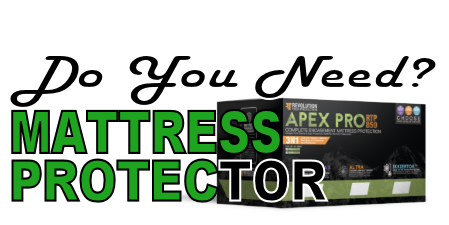Mattresses
SHOP STANDARD SIZES
SHOP STANDARD SIZES
SHOP BY TYPE
SHOP BY BRAND
RV Mattresses
Adjustable Beds
Shop By Brand
Shop By Size
Oversized Beds
Do You Really Need a Mattress Protector?

Shop Custom Size Mattress Protector
The answer is both yes and no. We will explain why one might want to have a protector and also the reasons why one might not. The mattress protector was designed and developed to provide a mattress with damage protection. Not only does it protect the mattress, in many ways it also protects the user. Mattress protectors are relatively inexpensive; cheaper than mattress pads or mattress toppers. Generally, a mattress protector is lightweight. The primary benefits are enhanced by the fact these do what they do without affecting comfort.
- Benefits: There are many alternatives to a mattress protector, though none provide all the same benefits. A good mattress protector will prevent damage by repelling liquids from urine, spills and other types of leakage. It will also decrease the chance for marks and staining. As you sleep, you shed skin cells and may even experience sweating. This creates a breeding ground for bacteria and allergens. A mattress protector made from hypoallergenic materials can lessen the effects of use. People who suffer from asthma can especially benefit from using a mattress protector. It serves as a barrier against dust mites and bed bug infestation all the while helping to maintain the quality of a mattress over time.
- Composition and Fit: A quality mattress protector can be made from a variety of materials. Common options include polyester, vinyl, plastic, down, spandex, cotton, and Tencel lyocell. Not all mattress protectors are waterproof; in fact, some people prefer protectors that are not waterproof because waterproof ones may be less breathable and can cause the sleeper to feel hotter. The thickness of a mattress protector does not necessarily indicate its quality. As long as the materials are carefully chosen and the protector is well made, it should perform well.
- Tips: If your mattress is new, you may want to wait a day or two before putting a mattress protector on it. This is especially important for memory foam mattresses. Allowing the mattress to air out before covering it helps reduce the typical foam smell. When you’re ready to use the mattress protector, wash it first, then place it directly on the mattress. Bed sheets can be placed over the protector. While some mattress protectors can double as sheets, using separate bed sheets is recommended for maximum comfort and extra protection.
Care & Cleaning Your Mattress Protector
Each mattress protector comes with specific care instructions. As a general rule, wash your mattress protector whenever you wash your other bedding. Your mattress protector should also be easily removable for washing. Most mattress protectors perform best when washed and dried on a cool setting. This helps prevent shrinkage and reduces the risk of damage. How often you wash your protector is up to you, but be sure to do it frequently enough to prevent allergies and mold growth. Different materials may require different cleaning methods, so always read the care instructions after purchase. Keeping your mattress protector clean also helps prevent unpleasant odors.
© 2025 Rest Right Mattress. All Rights Reserved.

